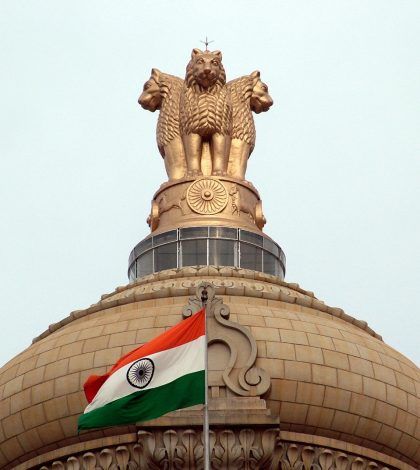Important Paleolithic Sites in South India
Describe the important Palaeolithic sites from South India with suitable examples. What is the significance of South Indian Palaeolithic cultures?
Approach
Introduction: Brief note on the Palaeolithic cultures in India
Body: Describe the important Palaeolithic sites from South India with suitable examples. And add the significance of South Indian Palaeolithic cultures.
Conclusion: add its contemporary relevance
INTRODUCTION
The Palaeolithic Age, also known as the Old Stone Age, is the earliest period of human history, spanning from approximately 2 million years ago to around 10,000 BCE. This period is characterized by the use of simple stone tools and a hunter-gatherer lifestyle. In India, the Palaeolithic Age is divided into three phases: Lower, Middle, and Upper Palaeolithic.
BODY
Lower Palaeolithic (2 million – 100,000 BCE)
Key Sites: Attirampakkam (Tamil Nadu), Isampur (Karnataka), and the Soan Valley (now in Pakistan).
Tools: Acheulian hand axes, cleavers, and choppers made from quartzite and other hard stones.
Significance: Represents the earliest evidence of human activity in India, with tools indicating a basic understanding of tool-making and usage.
Middle Palaeolithic (100,000 – 40,000 BCE)
Key Sites: Bhimbetka (Madhya Pradesh), Kurnool Caves (Andhra Pradesh).
Tools: Flake tools, scrapers, and points made using the Levallois technique.
Significance: Shows advancements in tool technology and the emergence of more specialized tools for hunting and processing animal hides.
Upper Palaeolithic (40,000 – 10,000 BCE)
Key Sites: Patne (Maharashtra), Belan Valley (Uttar Pradesh).
Tools: Blade tools, burins, and microliths made from fine-grained stones like chert and flint.
Significance: Marks the development of more sophisticated tools and the beginning of artistic expression, as evidenced by cave paintings and carvings
Important Palaeolithic Sites in South India
- Attirampakkam, Tamil Nadu
Attirampakkam is one of the most significant Lower Palaeolithic sites in India. Discovered by Robert Bruce Foote in 1863, it has yielded numerous Acheulian tools, including hand axes and cleavers. Recent excavations have provided evidence of human occupation dating back to around 1.5 million years ago.
- Kurnool Caves, Andhra Pradesh
The Kurnool Caves are notable for their Middle and Upper Palaeolithic artifacts. Tools such as scrapers, blades, and burins have been found here. The site also contains evidence of prehistoric human habitation, including hearths and animal bones.
- Hunsgi and Baichbal Valleys, Karnataka
These valleys are rich in Lower Palaeolithic sites. The Hunsgi Valley, in particular, has yielded a large number of Acheulian tools. The tools found here include hand axes, cleavers, and choppers, indicating a well-developed stone tool technology.
- Isampur, Karnataka
Isampur is another significant Lower Palaeolithic site. It is known for its well-preserved Acheulian tools and has provided valuable insights into the technological advancements of early humans in South India.
- Nagarjuna Konda, Andhra Pradesh
Nagarjuna Konda is an important site for both Lower and Middle Palaeolithic periods. It has yielded a variety of stone tools, including hand axes and scrapers. The site also provides evidence of early human adaptation to different environmental conditions.
Significance of South Indian Palaeolithic Cultures
- Technological Advancements
The Palaeolithic sites in South India provide crucial evidence of the technological advancements made by early humans. The variety and sophistication of tools found at these sites indicate a high level of skill and innovation in stone tool production.
- Human Evolution
These sites offer valuable insights into the evolution of early humans in the Indian subcontinent. The discovery of Acheulian tools and other artifacts helps trace the development of human cognitive and motor skills over time.
- Adaptation to Environment
The Palaeolithic cultures of South India demonstrate how early humans adapted to diverse environmental conditions. The presence of tools and evidence of habitation in different ecological zones, such as river valleys and caves, highlights their ability to exploit various resources for survival.
- Cultural Continuity
The continuity of tool types and techniques across different Palaeolithic periods suggests a long-term cultural tradition in South India. This continuity provides a framework for understanding the cultural and social dynamics of prehistoric communities.
- Archaeological Research
The study of South Indian Palaeolithic sites has significantly contributed to the field of archaeology. These sites have provided a wealth of data for researchers, helping to refine theories about human prehistory and the spread of early human populations.
Anthropology Full Course at Vishnu IAS Academy
What does Course Offer?
- 4 Months (250+ Class Hours)
- Online (App + Web) / Offline / Hybrid Mode of Classes
- Live + Recorded Videos Access For 1 Year
- 2 Hour Live Class From Monday to Saturday (1.5 Hours for Class + ½ Hour for Doubt Solving)
- Foundation to Advanced Level of Teaching
- Simple and Integrated Content
- One Stop Solution Books
- Regular Value Added Content
- Current Affairs & Case Studies Modules
- Daily Answer Writing Practice
- Weekly Grand Tests On Sundays & Evaluation With Guidance and Topper Will be Rewarded
- 500+ Model Answers
- 9 AM – 9 PM Support System
- Free GS Current Affairs
- Free Interview Guidance for Anthropology


